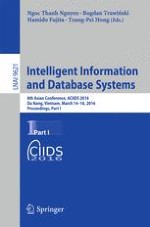2016 | OriginalPaper | Chapter
Database of Peptides Susceptible to Aggregation as a Tool for Studying Mechanisms of Diseases of Civilization
Authors : Pawel P. Wozniak, Jean-Christophe Nebel, Malgorzata Kotulska
Published in: Intelligent Information and Database Systems
Publisher: Springer Berlin Heidelberg
Activate our intelligent search to find suitable subject content or patents.
Select sections of text to find matching patents with Artificial Intelligence. powered by
Select sections of text to find additional relevant content using AI-assisted search. powered by
